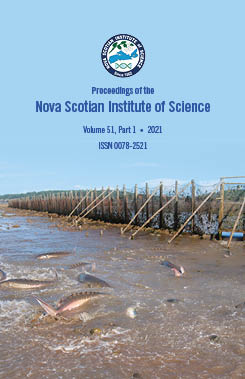Historical air photo missions in the Maritimes during the early 1920s: coverage, thematic scope, and utility 100 years later
DOI:
https://doi.org/10.15273/pnsis.v51i1.10780Abstract
The historical and technological developments of powered flight and aerial photography have early connections in the Maritimes. Following the Great War (1914-18), a series of pioneering survey missions were initiated by the Canada Air Board in the civilian domain. From a science perspective, the air photos offer a unique opportunity for the detection of environmental change at an unusual centennial time scale. The missions of the early 1920s initially relied on military surplus seaplanes and innovative camera equipment that yielded several thousand high-resolution vertical air photos. This paper is focussed on the scope and outcome of the first experiments carried out over Nova Scotia and New Brunswick between 1921 and 1925, prior to more systematic use for topographic mapping during the remainder of that decade. The research is based on archival records and partial reconstruction of the digitized air photos into image mosaics. Photo interpretation and comparison with recent high-resolution satellite imagery offer insights concerning land use and land cover changes, coastal dynamics, and transformation of urban, rural and industrial landscapes. Experience todate with these early air photos and mosaics of the Maritimes holds promise for examining similar aerial survey missions in other parts of Canada.


